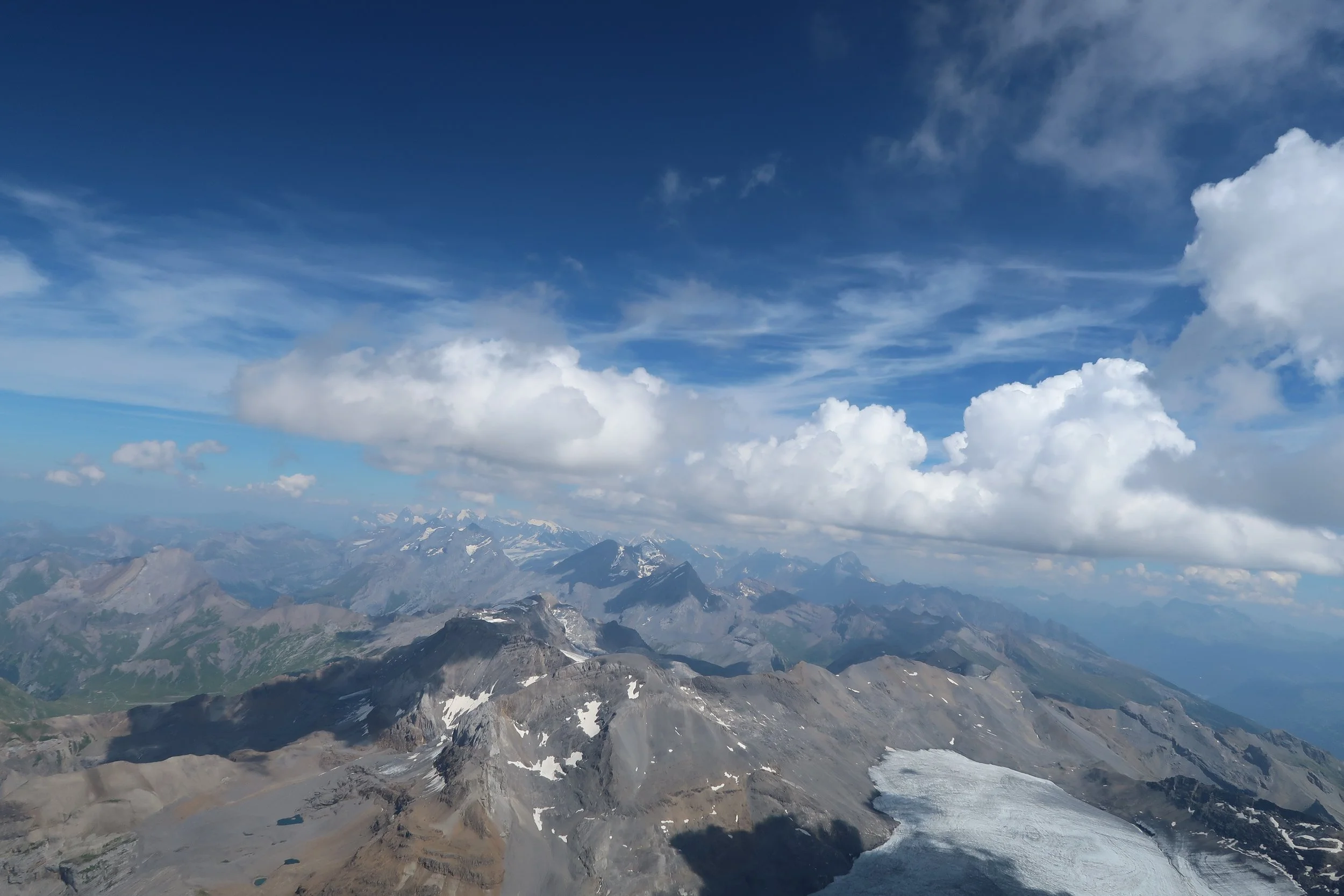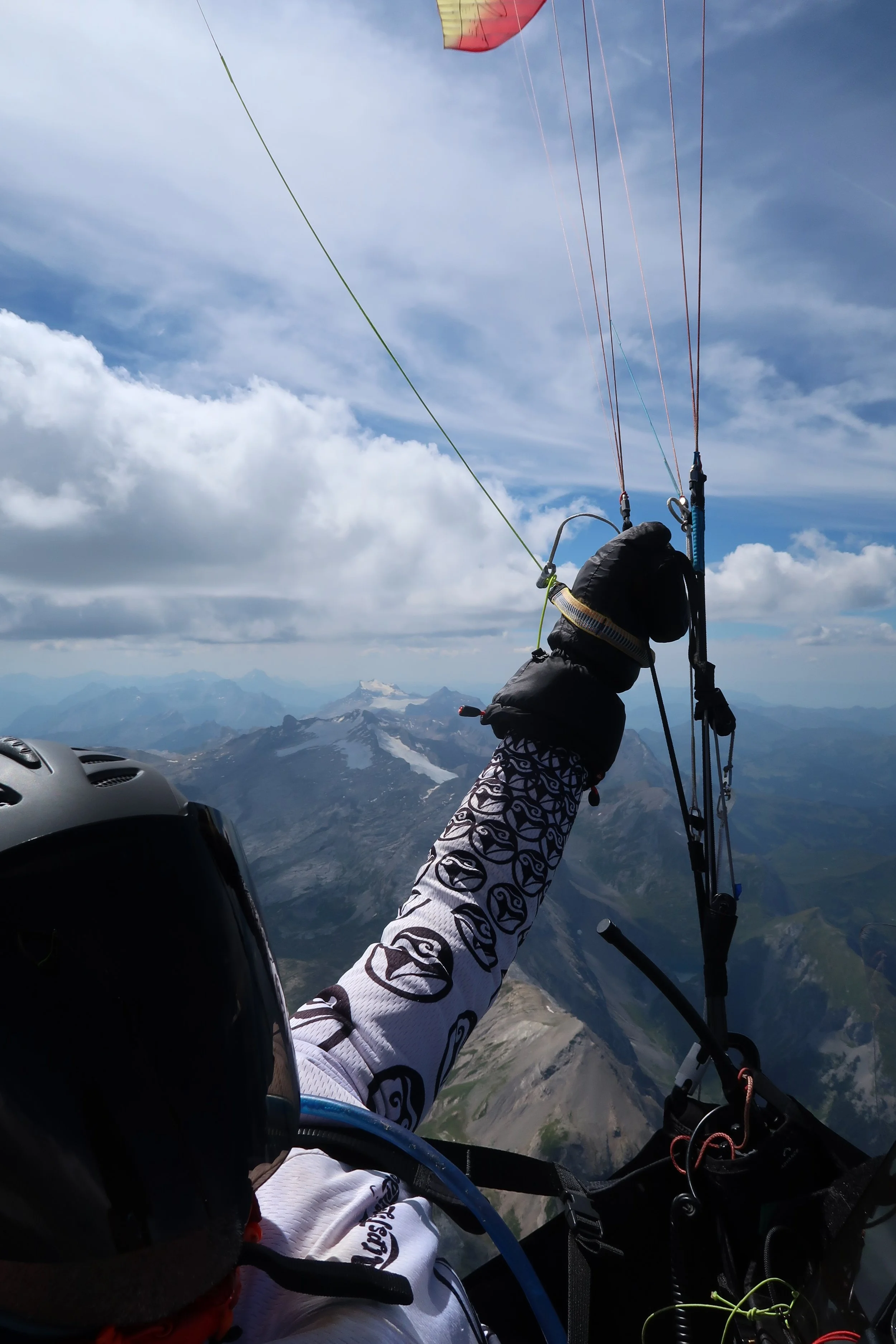Easy ‘unlock’ for flying farther
Flying high: Even on the warmest summer days it gets chilly further up. Dressing for the cold is one of the easiest unlocks to fly further. Picture taken above Plaine Morte in Switzerland at about 3800 m. August, 2023
Becoming a good XC pilot is hard work and there are no short cuts. But here’s something that so dramatically improved my xc-flying; it’s almost a ‘free lunch’ Not freezing, i.e., dressing for the temperatures in the forecast.
Stop freezing off your fingers!
Some people have amazingly good circulation and don’t get cold fingers. Not me, and especially not while flying. It doesn’t take much for my fingers to start getting brutally cold. The pain is pretty bad, and can get close to unbearable as the fingers thaw later on. Having cold fingers used to sap my motivation to pursue long flights.
Here’s how I’ve prevented this from happening:
Match your gloves to the temperature you expect
Check at the forecast for the altitude of the 0°C isotherm.
Then check the cloud base you expect to reach.
If the 0°C isotherm is lower than 800m above the altitude I expect to be flying at I wear mitts.
If the 0°C isotherm is around the same altitude as I expect to be flying at I add throw hand warmers (the chemical type that you shake to activate) into my mitts. Depending on how cold it is, I’ll even use two per mitt: One up by the fingers, the other on my wrist where the blood flows in and out of my hands. Remember to activate them well before take-off.
What kind of mitts?
I use the warmest possible mitts I could find. These typically have down or synthetic insulation.
I don’t wear any other gloves beneath them. Not only does this make it easier to warm up fingers and push around had warmer packs, it also gives me surprisingly good dexterity (once you get used to it).
I’ve tried heated gloves, and mitts are way better. Not just warmer, you also don’t have the problem of connecting batteries (that might not last 10 hours anyway).
I’ve tried mitts with a split-off index finger; I don’t like them. I don’t need them either (see below).
So how do you hold your B-toggles?
One reason few pilots wear mitts is because they think its impractical to grab the B-toggles of 2-line gliders. It’s actually not a problem.
I hold the B-toggles with my mitts (see picture below): My fingers grasp the wooden toggle on the outside of the riser, with the middle finger going round the outer end of the toggle. My thumb presses against the inside end of the wooden toggle. This takes some getting used to. It’s quite comfortable on the short toggles of hike & fly 2-liners, and a bit less so on standard size toggles. With time, you’ll develop great grip strength and stop getting cramps from squeezing.
I know plenty of people who grip the riser just above the toggle - my arms aren’t long enough for that.
Grasping the B-toggles with mitts is not a problem, but takes some getting used to.
What about the rest of the body?
Dressing warm helps keep your fingers warm too. Typically, I’ll also orient myself around the height of the 0°C isotherm relative to the height I expect to be flying at.
If the 0°C isotherm is lower than 800m above the altitude I expect to be flying at I wear a fleece over my merino shirt, a good down layer above that, and maybe my speedarms over that (the speedarms don’t actually contribute to keeping me warm). I’m warm enough to wear normal pants (without long johns) or even leggings under my shorts.
If the 0°C isotherm is around the same altitude I’ll go all in. Can’t possibly dress too warm for a long flight in these temperatures. In addition to the above I’ll throw in a second thick fleece layer, and a softshell outer layer to keep out the wind. I’ll also wear ski pants. I also want to have the gaiters connect to my shoes or have gaiters to prevent snow from getting into my shoes before launch.

